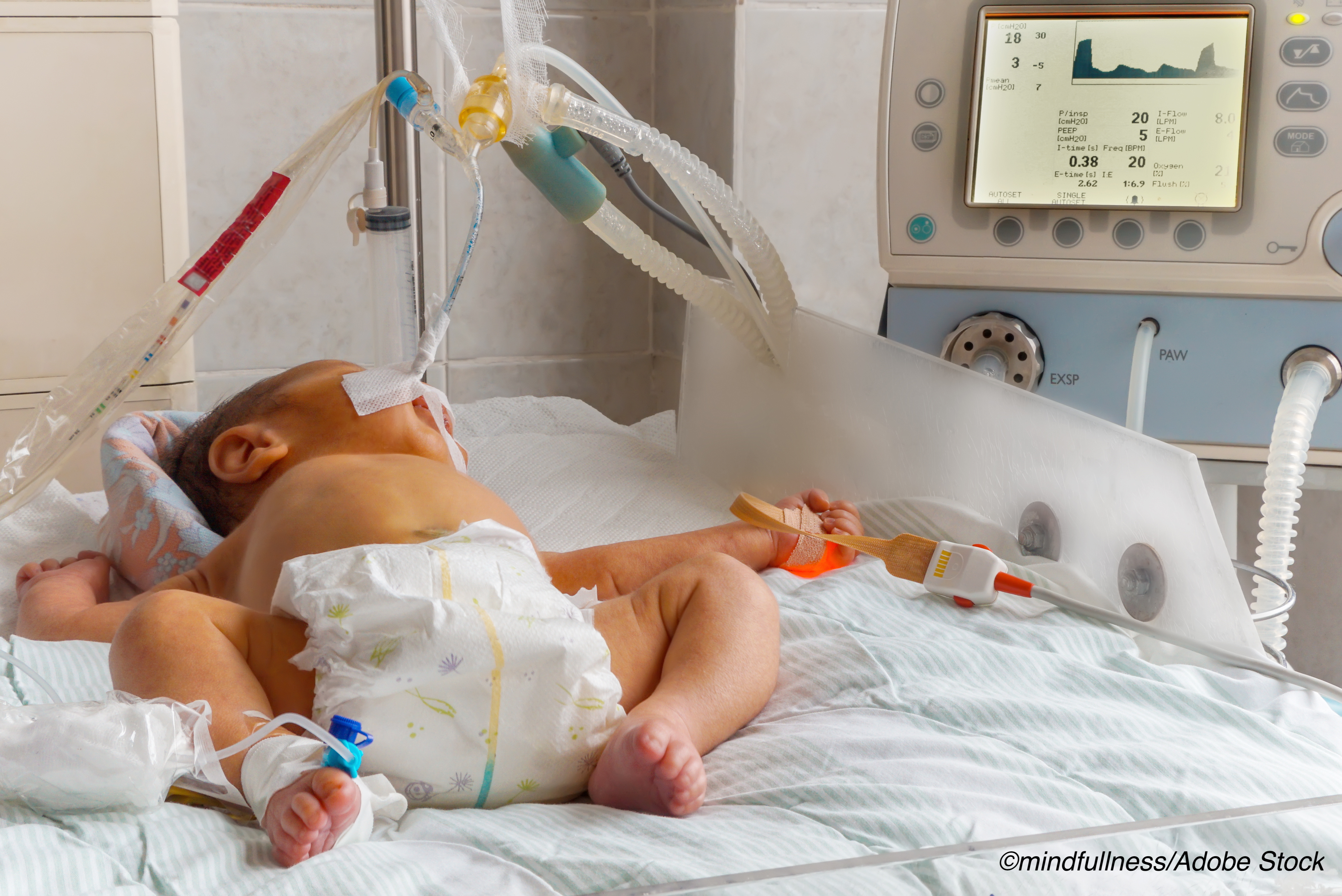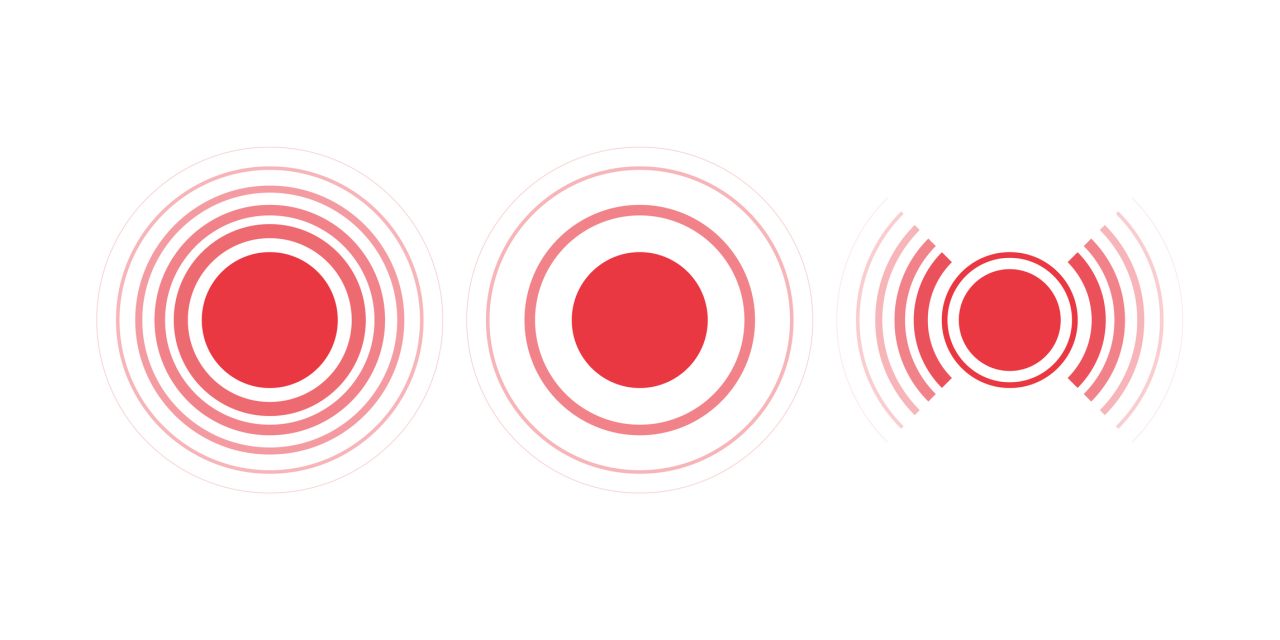 Among infants hospitalized with stable bronchiolitis with and without hypoxia, receiving intermittent pulse oximetry was associated with outcomes similar to receiving continuous pulse oximetry, according to findings from a randomized trial from the Canadian Pediatric Inpatient Research Network (PIRN).
Among infants hospitalized with stable bronchiolitis with and without hypoxia, receiving intermittent pulse oximetry was associated with outcomes similar to receiving continuous pulse oximetry, according to findings from a randomized trial from the Canadian Pediatric Inpatient Research Network (PIRN).
No significant difference was seen among the intermittent and continuous pulse oximetry groups in length of hospital stay from randomization to discharge and in secondary outcomes including medical interventions, reported lead researcher Sanjay Mahant, MD, of the Hospital for Sick Children, Toronto, and colleagues.
Bronchiolitis is a leading cause of hospitalization among infants and toddlers, accounting for more than 100,000 hospitalizations and more than $1.7 billion in in-patient medical costs annually. Inpatient bronchiolitis management involves largely supportive care — fluid and oxygen supplementation, respiratory support, and discharge decisions are all guided by clinical and physiologic monitoring, Mahant and colleagues explained.
“In hospital practice, pulse oximetry for identifying hypoxia is considered the fifth vital sign,” they wrote in JAMA Pediatrics. “Practitioners choose a pulse oximetry oxygen saturation target to assist with admission and discourage decisions and supplemental oxygen therapy initiation and discontinuation.”
American Academy of Pediatrics (AAP) guidelines recommend using an oxygen saturation target of 90% or higher in infants hospitalized with bronchiolitis, and the researchers noted that the practice is supported by a multicenter study that found better outcomes with this target, compared to a target of 94%.
AAP guidelines also state that practitioners may choose not to perform continuous pulse oximetry monitoring given the potential that the practice is more harmful than beneficial. The Society of Hospital Medicine Choosing Wisely guidelines go further, saying continuous pulse oximetry should not be used for patients who are not on oxygen.
“Retrospective studies suggest that stable infants with bronchiolitis stay in the hospital longer than needed because of practitioners’ reliance on the pulse oximeter to make management decisions,” Mahant and colleagues wrote. “Experts and practitioners postulate that continuous measurement of oxygen saturation results in greater detection of transient and false-positive desaturations, leading to unnecessary additional supplemental oxygen use, more interventions, prolonged hospital stays and higher costs.”
In addition, continuous monitoring of stabilized infants without hypoxia greatly adds to nursing workload and alarm fatigue; however, many practitioners and parents still have concerns that intermittent monitoring is not sufficient and compromises safety.
In an effort to better understand the issue, Mahant and colleagues conducted a multicenter, pragmatic randomized clinical trial in hospitalized infants with stabilized bronchiolitis with and without supplemental oxygen to compare intermittent and continuous pulse oximetry.
The trial included 229 infants hospitalized with stable bronchiolitis managed with an oxygen saturation target of 90% or higher (median age, 4 months; 59% male; 44% from community hospital sites).
Median length of hospital stay from randomization to discharge was 27.6 hours (interquartile range, 18.8-49.6 hours) in the intermittent monitoring group and 25.4 hours (IQR, 18.3-47.6 hours) in the continuous monitoring group (difference of medians, 2.2 hours; 95% CI, −1.9 to 6.3 hours; P=0.17).
No significant differences were observed between the intermittent and continuous groups with regard to:
- The median length of stay from inpatient unit admission to discharge: 49.1 (IQR, 37.2-87.0) hours versus 46.0 (IQR, 32.5-73.8) hours (P=0.13).
- The frequencies or durations of hospital interventions, such as oxygen supplementation initiation: 4 of 114 (3.5%) versus 9 of 115 (7.8%) (P=0.16).
- The median duration of oxygen supplementation: 20.6 (IQR, 7.6-46.1) hours versus 21.4 (11.6-52.9) hours (P=0.66).
No significant differences were observed in other secondary outcomes including frequency of intensive care transfer, readmission to hospital, parent anxiety, or missed parental workdays.
The mean (SD) nursing satisfaction with monitoring was “significantly greater in the intermittent group: 8.6 (1.7) versus 7.1 (2.8) of 10 workdays; the mean difference was 1.5 (95% CI, 0.9-2.2; P<0 .001),” they added.
The researchers concluded that the study findings “support the standard use of intermittent pulse oximetry in infants hospitalized with stabilized bronchiolitis and provide strong evidence for quality improvement efforts in deimplementing continuous pulse oximetry.”
In an accompanying commentary, Heather Hsu, MD, and Christine Cheston, MD, of Boston University School of Medicine, and Ronnye Rutledge, MD, of Brigham and Women’s Hospital, Boston, agreed that the study findings “unequivocally strengthen the evidence that continuous monitoring should be considered an ineffective intervention.”
They noted that “it is also important to consider the merits of deimplementation of continuous pulse oximetry alongside the many competing quality improvement and deimplementation opportunities in inpatient pediatrics.
“Undoing decades of clinical habit via deimplementation can be difficult, locally controversial, and time intensive,” they added. “The most successful pediatric deimplementation strategies take multifaceted approaches that include practitioner and family education, audit and feedback, and establishment of clinical decision support tools. Similarly, sustained reductions in medical overuse are best achieved when change strategies are adapted to the local context with an appreciation of the roles of all interdisciplinary team members and families with effective engagement of each of these stakeholders in the process.”
They concluded that the study by Mahant and colleagues “addressed a long-standing, glaring gap in the bronchiolitis literature, contributing randomized clinical trial evidence that intermittent pulse oximetry is a safe method of monitoring for infants with stabilized conditions with a modest benefit to nursing satisfaction over continuous monitoring. Pediatric care teams are left to decide how best to prioritize deimplementation of continuous pulse oximetry amid a competing list of overused care practices. Doing so requires a systematic approach that considers the magnitude of the problem and strength of evidence, as well as the type of action, barriers, facilitators, and strategies needed for deimplementation to occur.”
-
Among infants hospitalized with stable bronchiolitis with and without hypoxia, outcomes with intermittent pulse oximetry were similar to those among infants receiving continuous pulse oximetry.
-
No significant difference was seen in the trial among the intermittent and continuous pulse oximetry groups in length of hospital from randomization to discharge.
Salynn Boyles, Contributing Writer, BreakingMED™
This research was funded by the Hospital for Sick Children, Toronto.
Researcher Sanjay Mahant reported receiving grants from the Canadian Institutes of Health Research (CIHR) during the conduct of the study and personal fees from the Journal of Hospital Medicine outside the submitted work.
Cheston, Hsu, and Rutledge had no financial relationships to disclose.
Cat ID: 138
Topic ID: 85,138,570,730,138,192,195,925


